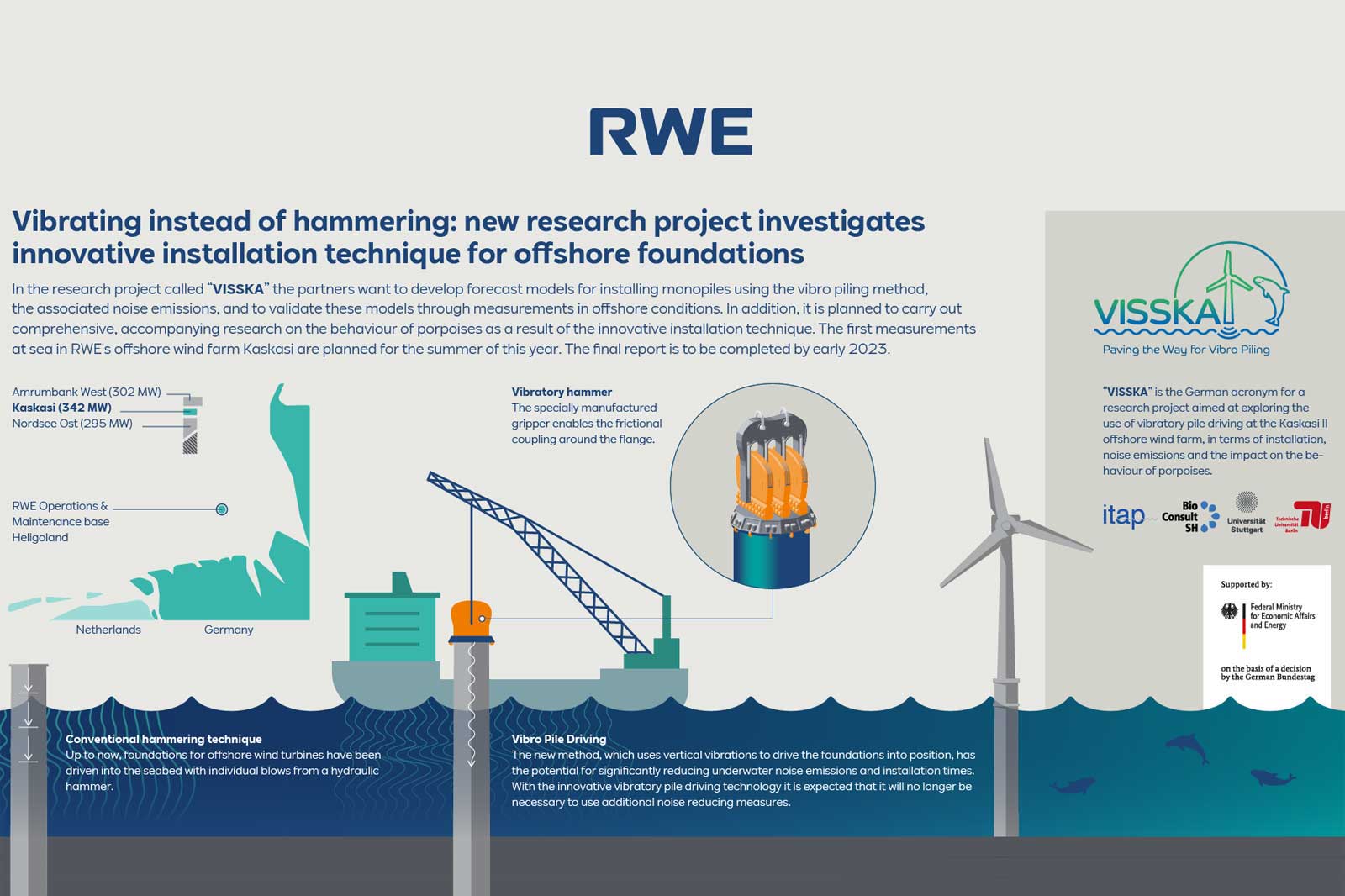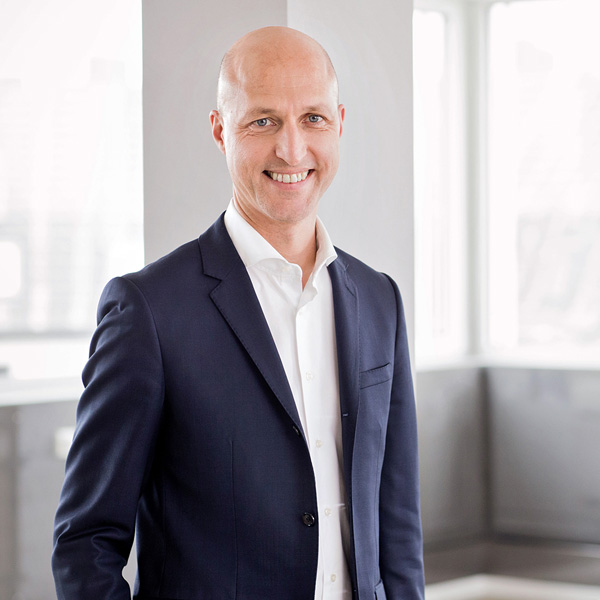Construction starts in Rhenish lignite area – RWE builds Aldenhoven wind farm
15.04.2024


“With the innovative vibratory pile driving method used at our Kaskasi offshore wind farm we expect shorter installation times and, due to the reduced noise emissions, it is also better for the maritime environment. Thanks to the support from the Federal Ministry for Economic Affairs and in collaboration with our partners, we want to pave the way for the more environmentally friendly vibro pile driving technology. This project will help us achieve RWE’s goal of becoming a leader in advancing offshore innovation and technologies.”
“VISSKA” is the German acronym for a research project aimed at exploring the use of vibratory pile driving at the Kaskasi II offshore wind farm, in terms of installation, noise emissions and the impact on the behaviour of porpoises. RWE Renewables, itap GmbH, BioConsult SH GmbH & Co. KG as well as the University of Stuttgart (Institute of Geotechnical Engineering) and Technische Universität Berlin (Foundation Engineering and Soil Mechanics) signed a corresponding cooperation agreement. The German Federal Ministry of Economic Affairs and Energy is funding the research project, which is being coordinated by RWE.
This year, RWE will start constructing the Kaskasi offshore wind farm (342 megawatts) off the German island of Heligoland. It will be the first commercial offshore wind farm in the world to use the improved installation method for driving the wind turbine foundations into the seabed to target penetration depth. The innovative vibro pile driving technology significantly speeds up the process of installing the foundations, is gentler in its impact on the structure and produces far less noise.
Up to now, foundations for offshore wind turbines have been driven into the seabed with individual blows from a hydraulic hammer. The new, reduced-noise process uses vertical vibrations to drive the foundations into position. With the innovative vibratory pile driving technology it is expected that it will no longer be necessary to use additional noise reducing measures to protect marine mammals.
The pilot at Kaskasi is accompanied by a comprehensive research project. Together, the partners want to develop forecast models for installing monopiles using the vibro pile driving method, the associated noise emissions, and to validate these models through measurements in offshore conditions. In addition, the participating organisations are carrying out comprehensive accompanying research on the behaviour of porpoises as a result of the lower noise installation technique. The first measurements at sea are planned for the summer of this year. A total of 38 foundations for the wind turbines will be installed from the third quarter of 2021 onwards. The final report of the 28-month research project is to be completed by early 2023.
In collaboration with its four project partners, RWE is drawing on years of research in the area of vibro pile driving under laboratory and onshore conditions. The tests carried out up to now have already shown that this installation technology has the potential to reduce underwater noise emissions as well as installation times. The project’s objective is to build and expand on the results from previous research. In the long term, the innovative pile driving method is to be established as a lower noise and more environmentally friendly alternative to conventional hammering techniques.
Kaskasi wind farm can supply more than 400,000 homes with green electricity
Kaskasi offshore wind farm is to be constructed 35 kilometres north of the island of Heligoland and is expected to be commissioned in the summer of 2022. Once all wind turbines are fully operational in the fourth quarter of 2022, Kaskasi offshore wind farm will supply the equivalent of approximately 400,000 households with green electricity.